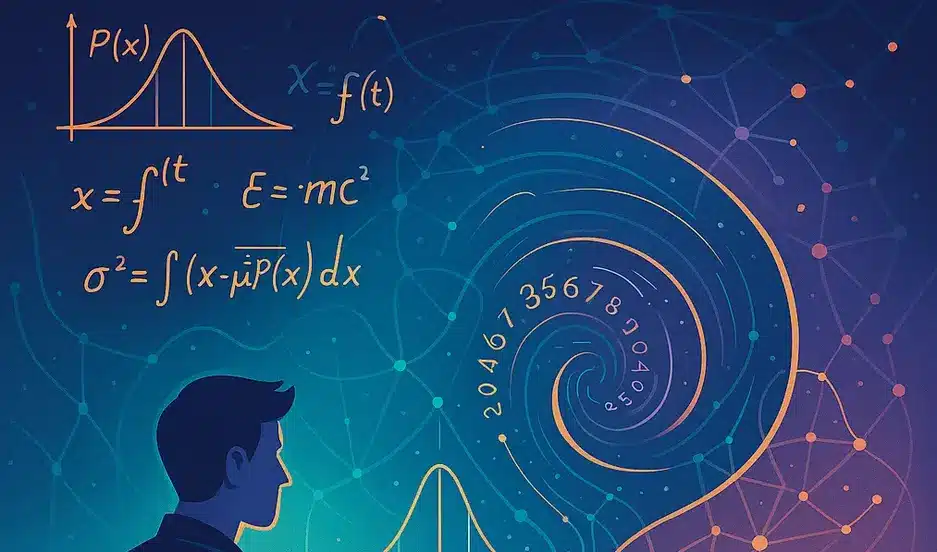In 1905, a bitter mathematical feud erupted in Russia that would ultimately revolutionize everything from nuclear weapons to Google’s search algorithm. This wasn’t just an academic dispute—it was a battle over the very nature of probability, free will, and mathematical independence that continues to shape our digital world today. The conflict began when socialist groups across Russia rose up against the Tsar, demanding complete political reform. This division split society so deeply that even mathematicians chose sides. On one side stood Pavel Nekrasov, the “Tsar of Probability,” who believed mathematics could explain free will and God’s will. His intellectual nemesis was Andrey Markov, known as “Andrey The Furious,” an atheist who had no patience for what he considered unrigorous mathematical thinking.
The Foundation of Probability Theory
For over 200 years, probability theory had relied on one fundamental assumption: the law of large numbers only worked with independent events. When you flip a coin 10 times, you might get six heads and four tails—not the expected 50/50 split. But as you keep flipping, the ratio gradually settles toward 50/50. This convergence to the expected value is known as the law of large numbers, first proven by Jacob Bernoulli in 1713.The key requirement was independence. Each coin flip had to be completely separate from the others. But what happens when events become dependent? Imagine asking people to guess an item’s value individually versus having them shout answers publicly. In the first case, guesses remain independent. In the second, the first person’s answer influences everyone else, creating dependent events where the average no longer converges to the true value.
The Feud That Changed Everything
Nekrasov took Bernoulli’s work one step further. He argued that if you observed the law of large numbers in social statistics like marriage rates, crime rates, and birth rates, you could infer that the underlying decisions must be independent. Since these statistics followed the law of large numbers, the decisions causing them—getting married, committing crimes, having babies—must be acts of free will. To Nekrasov, free will wasn’t philosophical; it was scientifically measurable.
Markov found this reasoning absurd. He set out to prove that dependent events could also follow the law of large numbers, effectively destroying Nekrasov’s argument. To test this, he turned to Russian literature, specifically Alexander Pushkin’s “Eugene Onegin.”
The Birth of Markov Chains
Markov took the first 20,000 letters of the poem, stripped out punctuation and spaces, and analyzed the sequence. He found that 43% were vowels and 57% were consonants. Then he broke the string into overlapping pairs: vowel-vowel, consonant-consonant, vowel-consonant, and consonant-vowel.If the letters were independent, vowel-vowel pairs should occur about 18% of the time (0.43 × 0.43). But Markov found they only appeared 6% of the time—far less than independence would predict. All actual values differed greatly from independent predictions, proving the letters were dependent.To complete his argument, Markov needed to show these dependent letters still followed the law of large numbers. He created a prediction machine using two circles representing vowel and consonant states, with arrows showing transition probabilities. Starting at a vowel, there was a 13% chance of getting another vowel and 87% chance of getting a consonant.
The Monte Carlo Method Revolution
Markov’s work remained largely unnoticed until the 1940s, when mathematician Stanislaw Ulam faced a seemingly impossible problem: understanding how neutrons behave inside nuclear bombs. After recovering from a severe illness by playing Solitaire, Ulam had a flash of insight. What if he could simulate complex systems by generating random outcomes, just like he did with card games?The challenge was that neutrons aren’t independent like Solitaire games. A neutron’s behavior depends on its position, velocity, energy, and surroundings. Ulam’s colleague John von Neumann realized they needed Markov chains to model these dependent systems.They created a simplified Markov chain where a neutron could scatter, be absorbed, or cause fission. The transition probabilities depended on the neutron’s properties and the uranium configuration. Running this chain on the world’s first electronic computer, ENIAC, they could statistically determine how many neutrons were produced without exact calculations.This method became known as the Monte Carlo method, named after the famous casino in Monaco. It revolutionized nuclear physics and spread quickly to other fields, from reactor design to weather prediction.
Google’s PageRank Algorithm
In the 1990s, as the internet exploded with thousands of new pages daily, search engines struggled to find relevant information. Yahoo and other early engines simply counted keyword frequency, which was easily manipulated by repeating keywords hundreds of times in hidden text. Two Stanford PhD students, Sergey Brin and Larry Page, realized they needed a way to measure both relevance and quality. They borrowed an idea from libraries: just as books with more due-date stamps were considered better, web pages with more links could be considered more important. Brin and Page modeled the web as a Markov chain, where each webpage was a state and links were transitions. They created PageRank, which simulated a random web surfer following links. Pages where the surfer spent more time were ranked higher. The algorithm included a damping factor—85% of the time following links normally, 15% jumping to random pages—to prevent getting stuck in loops.This Markov chain-based algorithm became the foundation of Google, transforming it from a startup to a trillion-dollar company that dominates internet search.
The Future of AI Applications
From predictive text to large language models, AI is evolving rapidly — but it also raises new challenges like data feedback loops. Employers can get ahead by hiring innovators who understand both the opportunities and risks of AI. Post your job on WhatJobs today and connect with professionals ready to shape the future of intelligent systems.
Post a Job Free for 30 Days →Modern Applications in AI
Today, Markov chains power the text prediction in our phones and email services. Claude Shannon extended Markov’s work by using entire words as predictors instead of just letters. Modern large language models use sophisticated versions of these chains, though they also incorporate attention mechanisms to focus on relevant context.However, there’s a growing concern: as AI-generated text floods the internet, it becomes training data for future models, potentially creating feedback loops that could lead to repetitive, meaningless content.
The Power of Memoryless Systems
What makes Markov chains so powerful is their memoryless property. Despite the complex histories of systems—from letter sequences to neutron interactions to weather patterns—you can often ignore almost all of that history and just look at the current state to predict what happens next.This simplification allows us to model extremely complex systems and make meaningful predictions. As one paper noted, “Problem-solving is often a matter of cooking up an appropriate Markov chain.”
A Real-World Example: Card Shuffling
Here’s a practical example that demonstrates Markov chains in action. When you shuffle a deck of cards, you’re actually running a Markov chain where each deck arrangement is a state and each shuffle is a transition.For a standard 52-card deck, it takes exactly seven riffle shuffles to make the deck truly random. However, if you shuffle by simply mixing cards around (like most people do), you’d need over 2,000 shuffles to achieve the same level of randomness. This explains why casinos use mechanical shufflers—they ensure proper randomization that human shuffling often fails to achieve.The next time you play cards, remember that proper shuffling isn’t just about mixing—it’s about running a Markov chain that reaches a truly random state. Seven riffle shuffles or it doesn’t count!
This remarkable journey from a 1905 Russian mathematical feud to the algorithms powering our digital world demonstrates how pure mathematical curiosity can have profound, unexpected consequences. Markov chains continue to shape our understanding of complex systems, from nuclear physics to artificial intelligence, proving that sometimes the most abstract mathematical concepts become the foundation of our most practical technologies.




